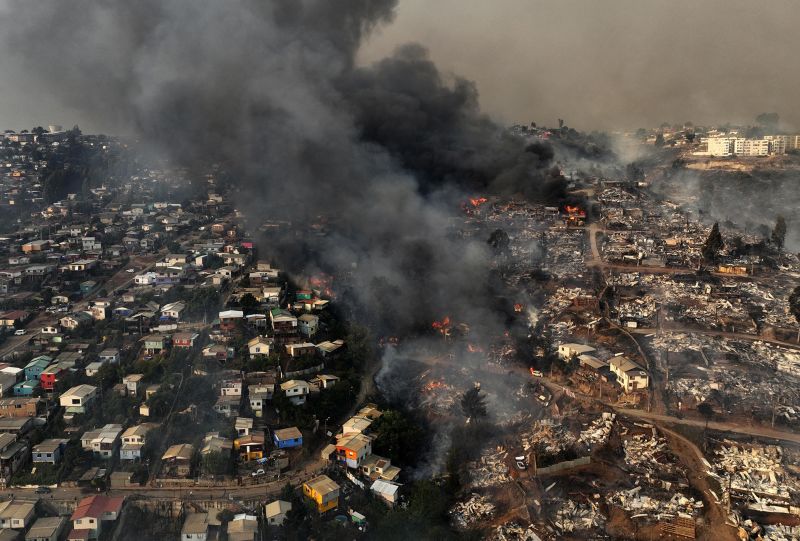
Wildfires that are turning neighborhoods to ash are likely Chile’s deadliest on record, UN agency says
The devastating wildfires tearing across large parts of Chile are believed to be the country’s deadliest on record, according to the United Nations disaster agency, as firefighters struggle to contain more than 160 blazes after days of burning.
The fires have claimed at least 123 lives and hundreds of people are still missing, according to Chilean authorities. Officials also said that 33 bodies have been identified and 79 autopsies have been conducted.
Hundreds more remain missing and the death toll is expected to rise, according to the UN Office for Disaster Risk Reduction.
The wildfires have devastated swaths of central and northern Chile, destroying thousands of homes and buildings and turning neighborhoods to ash.
President Gabriel Boric said Tuesday the fires are the “biggest tragedy” in the country since the deadly 2010 earthquake – a magnitude 8.8 that killed hundreds.
“The inhabitants of Viña del Mar, of Quilpué, of Villa Alemana, have gone through and are experiencing a situation that has been tremendously catastrophic, exceptional, unprecedented and painful,” he said Tuesday.
Boric declared a state of emergency Sunday as coastal cities including Viña del Mar and Valparaiso choked with smoke, when fires moved from forested to urban areas. Aerial shots of Viña del Mar show scorched streets and row upon row of destroyed homes.
The president declared Monday and Tuesday as days of national mourning for fire victims.
Chile’s catastrophic fires have been driven by the impacts of El Niño — a natural climate fluctuation that has a global heating effect — colliding with the longterm trend of global warming, which is fueling more intense and more frequent drought and heat waves.
For the last decade, Chile has been grappling with a “mega-drought,” the longest there in at least 1,000 years, putting pressure on water supplies and drying up the landscape, priming it for fire.
The country has also been scorched by abnormally high temperatures in recent days. Chile’s capital Santiago reached 37.3 degrees Celsius (98.6 degrees Fahrenheit) on January 31, the country’s third-highest recorded temperature in more than a century, according to the World Meteorological Agency.
The past few years have seen a dramatic increase in wildfire activity in Chile, according to a January study published in the journal Nature, as high temperatures, drought and strong winds have combined to create perfect conditions for intense and destructive fires.
A total of 1.7 million hectares have burned in the country over the last decade, the study found.
